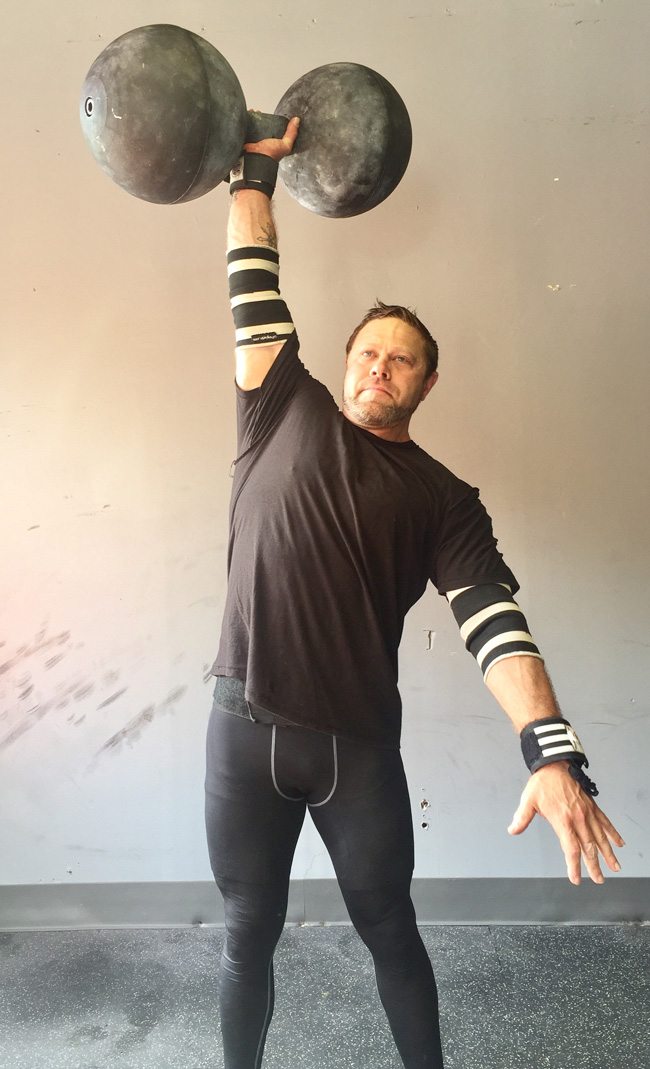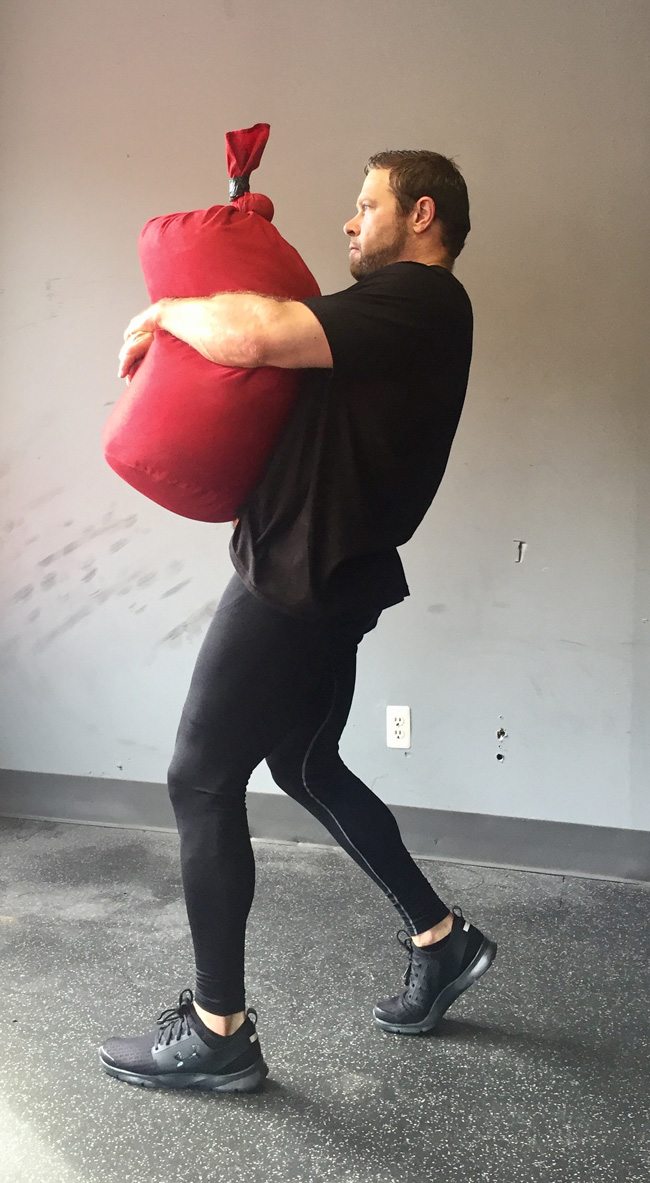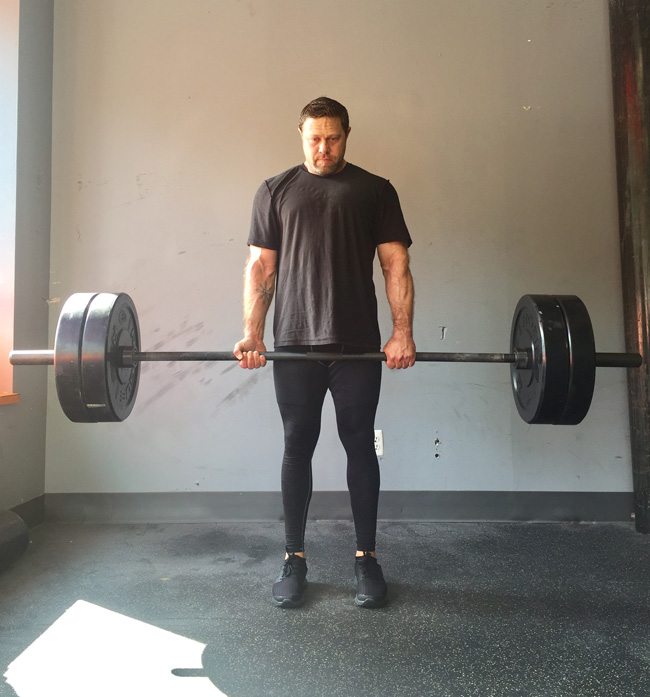Similar to “American Ninja Warrior” and the obstacle-based fitness trend it spawned, strongman training first started as a hit TV show strictly for our own entertainment. In 1977, CBS aired the first edition of a contest called “World’s Strongest Man,” where participants — a mix of bodybuilders, weightlifters, football players and the like — literally strapped refrigerators to their backs and sprinted for 17 seconds.
Four decades later, strongman training techniques and equipment have evolved, and the trend is making its way into commercial gyms. While this fitness method is much more thoughtful, functional and safe than it once was, it still tends to attract spectators. But you no longer have to sit on the sidelines. You can try these muscle-building, fat-torching moves regardless of your fitness level. In other words, you don’t need to be a strongman to train like one.
“[Commercial gyms] are starting to get variations of strongman equipment that won’t destroy their facility. You might see super heavy medicine balls that people use to simulate a stone load. Or you’ll see people carry dumbbells like farmer handles. There might be sandbags for people to lift and carry,” says Chad Canter, a trainer at the strength and conditioning studio, TS Fitness, and coach for PowerNYC, where he works with 20 male and female strongman athletes, including four pros, a national and world champion.
WHY NOW?
Strongman training is nothing new. In fact, the concept is centuries’ old. But in recent years, it has progressed to “focus not just on maximal strength, but also endurance, conditioning and an emphasis on skill and speed as well as brute strength,” says Lee Bell, MS, lecturer at The Muscle Mechanic UK. Other reasons for the sudden spike in popularity may include boredom and the fulfillment of a basic human need.
“People just don’t do manual labor like they used to, so they need more of a variety of movement at the gym now. It’s not just about coming in, sitting on a machine and doing your presses, then sitting at another machine and doing extensions. Strongman lets you pick things up and move them around in a much more dynamic way that’s also more mentally stimulating,” says Canter, who also regularly competes at 200 pounds in qualifiers for national strongman competitions.
There’s a cool, creative component to strongman training, too. “A stone or sandbag is not like a bench press, where you just press it up and down and rack it. With a stone or sandbag, you can pick it up and carry it. You can press it to your shoulders. You can load it over a bar repeatedly. There’s lots of things you can do, so you’re not as limited as you are with machines. Plus, it’s all very functional fitness that helps with day-to-day tasks. Farmers carries prep you for hauling your groceries, lifting a stone over a bar is like putting a box on a shelf and a clean and press is like picking up your kid.”
READ MORE > MASTER THE MOVE | THE PUSHUP
An additional appeal is that anyone can do it. “Anybody can learn how to pick something off the ground and put it on top of something else.You just need to scale things back to where you can handle it, and build up,” Cantor says. “I have a 75-year-old client who does farmers carries.”
Science also suggests strongman workouts are better at burning fat. “An interesting study published in the Journal of Strength and Conditioning Research found that the sheer intensity and volume of these exercises [i.e., farmers walk, log press and the stones] helped strongmen form an athletic look with high muscle levels and a lean body composition,” Bell says. “Any exercise that requires repeated, high-intensity activities with multiple muscle groups will improve conditioning and burn a lot of calories. Couple that with some a muscle-building stimulus from the heavy loads and strongman training will soon improve body composition.”
STRENGTH TRAINING VS. STRONGMAN TRAINING?
The larger and heavier equipment is the most obvious difference, but not the biggest. How you move with these tools is really what separates these methods. “In regular strength training, every movement has an A and a B move. If you squat, you lower your body down (A), then you stand up (B). In strongman training, the moves are much more dynamic, involving the total body, which is why I think it’s now gaining popularity,” Canter explains. “For example, you might pick up a yoke — a giant metal frame with a crossbar designed as a lifting station — and carry it 60 feet. Or if you lift a stone, you have to do a deadlift then row to get it to your lap, squat to stand up, then walk. You’re rarely ever picking something up and just standing in one place.”
While you can certainly perform strongman training on your own, it is smart to seek advice from someone knowledgeable as you would whenever you’re learning a new activity. “It’s good to have a trainer or coach introduce you to it and show you how to do it properly. You want to make sure that you’re going to pick things up in a safe way. Once you get it down, you can do it on your own,” Canter says.
The odds of getting hurt are no greater in strongman training than in regular weight-room work, but, as always, it’s good to be cautious and calculated. “Usually, pushing through a movement when you shouldn’t is when you get into trouble,” Canter warns. So when you power through, try to stay closer to 7 or 8 on a difficulty scale of 1–10.
Ready to become a strongman? Incorporate the following workout from Canter once a week and see how you feel — and look — over time.
1. SINGLE-ARM PUSH PRESS

Grab a bar or a dumbbell (such as the circus dumbbell, pictured) and hold it at shoulder level. Choose a weight you find challenging to straight press for a few reps. Standing with your feet hip-width apart, dip down as if you’re about to squat, then spring up, pressing the weight skyward. Slowly lower your arm, then repeat. This total-body exercise generates power from your lower body, which means you can lift more than you think. Do 3–4 sets of 8–12 reps, alternating sides.
2. FARMERS CARRY

Start this move the same way you would a deadlift. Grip the handles of dumbbells or kettle-bells tightly, keeping your back straight. Stand up and start walking. Not only does this strengthen your back and legs, but also it engages your core. Make sure your hands are actively squeezing the handles. If you don’t feel a strain in your hands by the end of each set, the weight is too light. Aim to cover 50–100 feet as fast as possible (or 45 seconds) for 2–4 sets.
3. SANDBAG CARRY

This variation of a carry lets you work through how to hold heavy objects in front of your body, engaging your core, hamstrings and glutes. If your gym doesn’t have sandbags, take a 45-pound weight plate (be sure to deadlift it up), bear hug it, slightly lean back and start walking. Set a timer to see how far you can go in 30 seconds. Each time you do this exercise, try to beat your distance. Aim for 50–100 feet as fast as possible for 2–4 sets.
4. DEADLIFT

You’ve already had to deadlift heavy weights for all the previous movements, so you know very well how to do this. The checklist to keep in mind here is to make sure your back is tight, not arched like a scared cat. Don’t let your hips come up before your shoulders when you stand up. If you break form, don’t go up in weight yet. Start with 5–10 reps for 4 sets.




